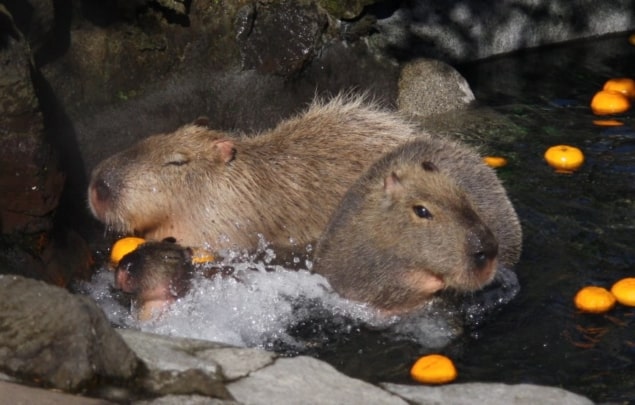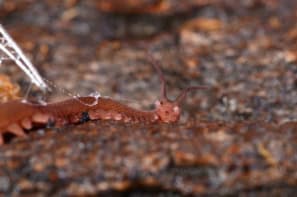
Researchers in California have discovered that thin hairs are stronger than thick hairs and able to endure greater tension before they snap. Tests of hairs from eight different mammals showed that thinner hairs tend to shear off, whereas thick hairs break cleanly – a discovery that could aid the design of bio-inspired materials.
Human hair has a hierarchical structure. Within the outer layer, or cuticle, is an inner cortex consisting of many small keratin fibres – around 5 μm in diameter and 100 μm in length – linked by chemical bonds. Within each of these fibres are smaller threads, 0.2–0.4 μm in diameter, which in turn consist of 7.5 nm intermediate filaments.
The protein-based structure of human hair gives it its strength and makes it resistant to deformation. The keratinous fibres stretch easily, and can be extended by up to 40 percent before breaking. Previous research has found that human hair has a tensile strength of around 200–260 MPa, which is comparable to steel. You could carry a person with 500–1000 human hairs.
Hair comparison
Curious to see how hair from other mammals might fare, material scientists and engineers at the University of California, Berkeley and the University of California, San Diego, US analysed hairs from humans, bears, boars, horses, capybaras, javelinas, giraffes and elephants. The diameter of these hairs varied from around 60 μm in humans to more than 350 μm in elephants and giraffes. Although the hairs’ basic morphology is comparable, the researchers found that their exact structure and diameter differ in ways that relate to their functionality.
The hair of capybara and javelina diverge from the other samples in several respects. The javelina, a pig-like animal native to Central and South America, raises the hairs on its back for defence. The cortex of its hair had a closed-cell foam-like structure, rather than the fibrillar structure found in other hairs. This increased its stiffness, making it similar to a porcupine quill, the team report.
The hair of the semi-aquatic capybara, in contrast, has a “twin” structure. This gives it an oval-like cross section with a central groove that lets water run off, helping the animal dry faster.

Yang Yu, Robert O Ritchie, Marc A Meyers, “On the Strength of Hair across Species”, pp1-14. Copyright 2019, used with permission from Elsevier.
The researchers pulled individual strands of hair apart until they broke. They found a clear correlation with tensile strength decreasing with increasing hair diameter. This also applied to hairs from the same species. For example, thin hair from a child was stronger than thicker hair from an adult.

Polar bears inspire insulating aerogel
When they studied the broken hairs with a scanning electron microscope, they found that hairs greater than 200 μm in diameter, such as those of boars, giraffes and elephants, tended to fracture, with a clean break. Thinner hairs, however, such as those of humans, horses and bears, sheared.
“Shearing is when small zig-zag cracks are formed within the material as a result of stress,” explains Wen Yang, an engineer at the University of California, San Diego. “These cracks then propagate, and for some biological materials, the sample isn’t completely broken until the small cracks meet. If a material shears, it means it can withstand greater tension and thus is tougher than a material that experiences a normal fracture.”
Yang says the findings, which were published in the journal Matter, could inspire the design of synthetic materials. “If we can create metals that have a hierarchical structure like that of hair, we could produce very strong materials, which could be used as rescue ropes and for constructions,” she explains.



